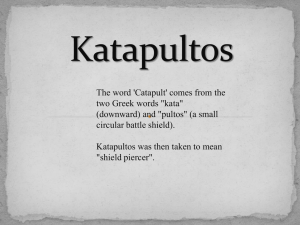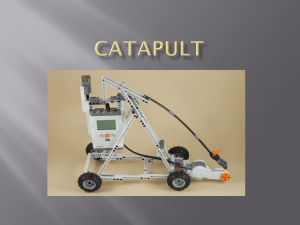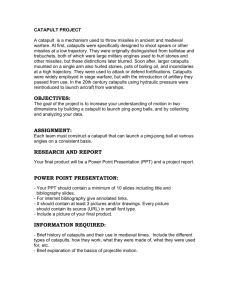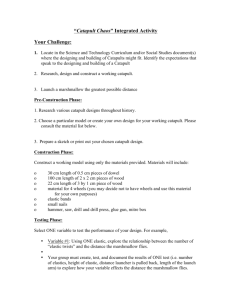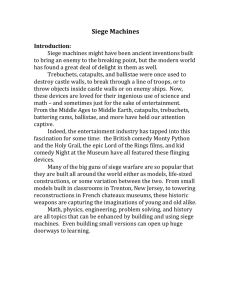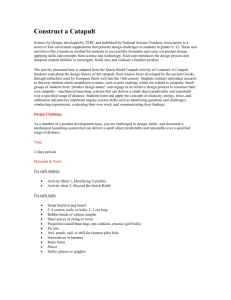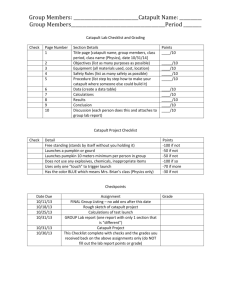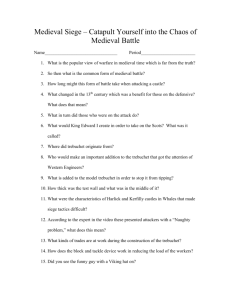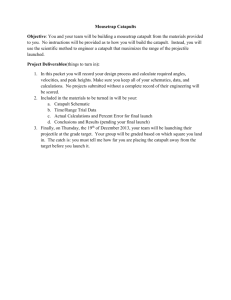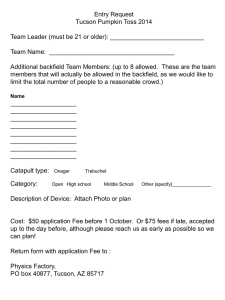Catapult and Medieval History Presentation
advertisement
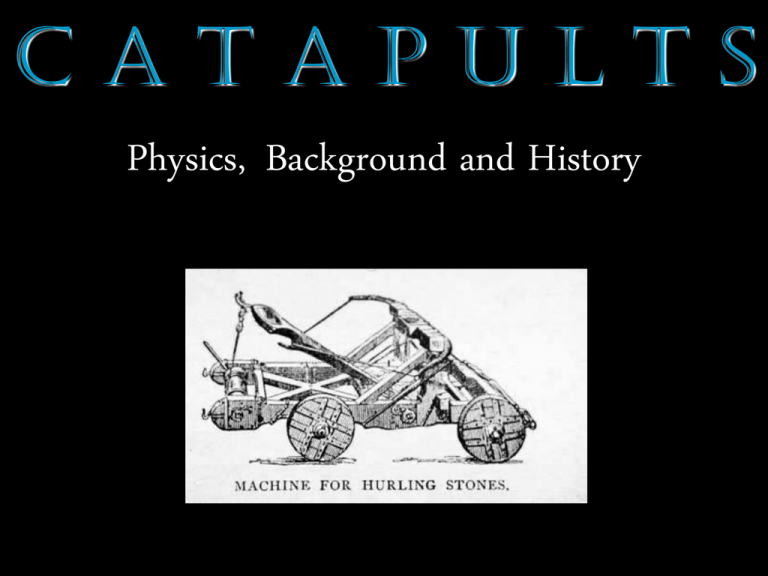
CATAPULTS Physics, Background and History Definition A machine that converts POTENTIAL ENERGY into mechanical motion or KINETIC ENERGY” Comes from the Greek word “Katapultos,” meaning “shield crusher” AKA: Siege Engine or Siege Machine The Invention The catapult, as we would recognize it today, was invented by the Greeks about 399 BC but various forms were found in central Asia much earlier than that During the war with Carthage, Dionysius of Syracuse produced the Gastraphetes or “belly bow” catapult The Invention continued… By 330 BC two distinct types of catapults emerged One fired javelins (spears) called a Euthytonon The other was the stone throwing Palintonon How was it used in Medieval times? First we need to understand the society of the Middle Ages Fear was rampant (AKA: Dark Ages) There was huge disparity between the rich and poor (Feudalism) Castles were constructed to protect nobles (& peasants but only during crisis) Castle construction Moat Draw bridge Portcullis Guard tower/ Barbican Murder holes Portcullis Catapult AKA Siege Machine or Siege Engine What is a siege? One army surrounds an enemy, keeping help, goods and water from leaving or entering the castle Medieval warfare Infantry (usually the poor) Archers (trained/ paid military) Battering Ram Psychological warfare Flaming shrubbery and brush Dead, diseased bodies Heads of tortured victims Battering Ram Catapult Structure & Design A typical catapult has each of the following: Arm Base Elastic Force Fulcrum Most catapults were made of wood The elastic force provided by twisted rope, springs, saplings The fulcrum is the point of support for a lever- which in the case of a catapult is the arm Factors Affecting Distance Mass of object being hurled Strength & flexibility of arm Mass of arm Length of the arm How far the arm is pulled back Angle of base or release (best angle?) Small transfer of energy into distortion Types of Catapults Roman design and others found during the Medieval period Ballista Roman Double armed – like a bow Shot large spears or javelins Mangonel or Onager French “Engine of War” Typical catapult Trebuchet French meaning “to stumble” Used a sling with the arm Extremely accurate Most advanced of all catapults Fixed Counterweight Trebuchet Swinging or Hinged Counterweight Trebuchet
